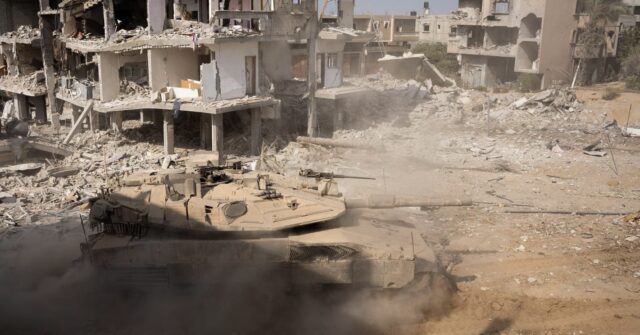The recent military operation by the Israel Defense Forces (IDF) in Gaza gained significant attention due to the death of Hamas leader Yahya Sinwar. The IDF released footage showcasing a tank firing at a building in southern Gaza identified as Sinwar’s location. This intensive engagement resulted not only in the structural collapse of the building but also led to Sinwar’s death, which was ultimately caused by a sniper. IDF soldiers discovered his body the following day and confirmed his identity soon after, indicating the precision and coordinated effort that characterized the operation against Hamas.
The operation was part of a broader campaign involving the Nahal Brigade and the 828th Brigade, which was directed by the Gaza Division in collaboration with the Israel Security Agency (ISA). These forces focused on targeted intelligence-based raids and operations, particularly in the Rafah area. Throughout the weeks leading up to Sinwar’s death, the IDF encountered numerous terrorists in close-quarters combat, utilizing both ground troops and aerial support from the Israel Air Force (IAF). This strategic military effort aimed to dismantle Hamas’ operational capabilities and suppress its leadership structure, ultimately leading to Sinwar’s demise.
The IDF reported that the incident on the day prior to Sinwar’s death involved identifying multiple terrorist suspects in the Tel al-Sultan area. The troops faced immediate aggression, as the suspects fired upon them and deployed grenades. In response, Israeli soldiers engaged in a fierce firefight, successfully neutralizing some of the attackers. Following this initial engagement, they launched further operations that included using tank fire on suspected terrorist hideouts, which culminated in the elimination of Sinwar and multiple others affiliated with Hamas.
The tactical preparations and operations leading up to Sinwar’s demise were extensive, occurring over several months. The IDF, alongside the ISA, concentrated on mitigating the threat posed by Sinwar and the units under his command in Rafah. The objective of these operations was not only to eliminate key figures in Hamas but also to hamper the group’s overall strategic effectiveness in the region. Throughout this period, the IDF’s efforts resulted in the removal of hundreds of terrorists, indicating a systematic and coordinated approach to dismantling Hamas’s infrastructure.
Interestingly, those involved in the operation that led to Sinwar’s death were primarily ordinary soldiers, with many still in training. This fact underscores a crucial point emphasized by Israeli military leadership: the role of each individual soldier is vital to the success of their military campaigns. The operation’s success reflects the significance of unit cohesion and the dedication of personnel at all levels, rather than solely reliant on specialized forces.
In summary, the recent operations in southern Gaza, particularly the killing of Yahya Sinwar, represent a strategic shift in the IDF’s approach to addressing the threats posed by Hamas. Coupled with the intelligence efforts and various brigades involved in the mission, it demonstrates a concerted effort to eliminate terrorist activities in the region. The ground operations, accompanied by targeted aerial strikes and the close cooperation between multiple military and intelligence units, highlight the complexity of modern warfare and the importance of well-coordinated military strategy. As Israel continues to engage in this conflict, the impact of such operations on the larger dynamics of the region remains to be fully seen.

